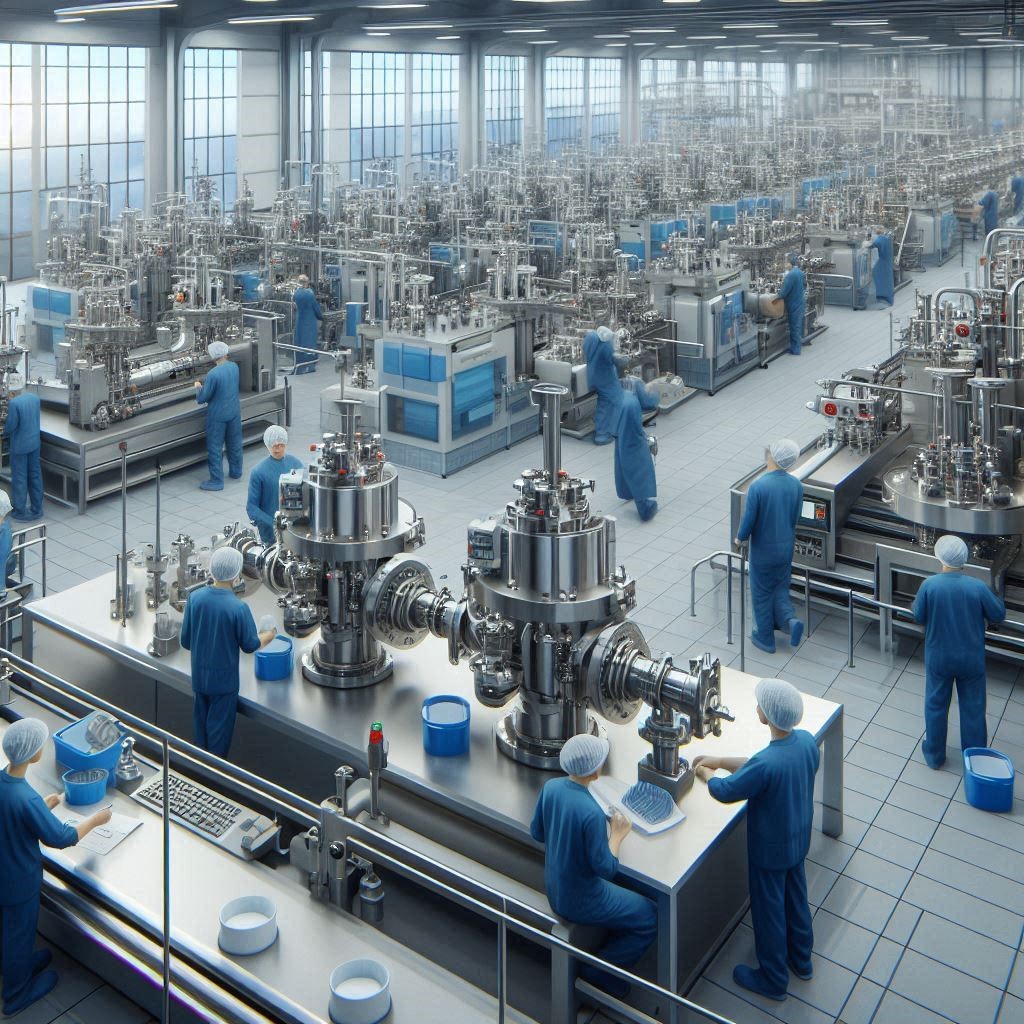Hygienic pumps and valves play a crucial role in maintaining cleanliness and operational efficiency in industries where sanitary conditions are paramount. These components are integral to the food and beverage, pharmaceutical, biotechnology, and cosmetic industries, where product purity and safety are non-negotiable. Understanding the key features of hygienic pumps and valves can help industries choose the right equipment to meet their specific needs. This article explores the essential features that define high-quality hygienic pumps and valves and their importance in ensuring optimal performance and compliance with stringent hygiene standards.
Hygienic pumps and valves Industry Outlook
The global future of hygienic pumps and valves industry size is projected to grow from USD 2.3 billion in 2023 to USD 2.8 billion by 2028, at a CAGR of 3.7% during the forecast period. Hygienic valves and pumps are generally made of high-quality stainless steel and are designed to be used in applications that require sterilization or clean processing. The need to avoid or minimize the risk of contamination is leading to the adoption of such pumps
1. Material Compatibility and Construction
Material Quality: Hygienic pumps and valves are typically made from high-grade stainless steel, such as 316L, which is resistant to corrosion and can withstand harsh cleaning agents and high temperatures. The choice of material is crucial to prevent contamination and ensure durability.
Construction: The construction of these components is designed to facilitate easy cleaning and sterilization. Smooth, polished surfaces reduce the risk of bacterial growth and contamination. Additionally, components are constructed with minimal crevices and joints to prevent residue accumulation.
2. Sanitary Design
Surface Finish: Hygienic pumps and valves feature a smooth, polished finish that minimizes the risk of bacteria and biofilm formation. The surface finish should comply with industry standards, such as Ra < 0.8 µm, to ensure easy cleaning and maintenance.
Design Features: These components often include features like tri-clamp fittings, sanitary welds, and crevice-free designs to meet strict hygiene standards. Tri-clamp connections allow for quick and easy disassembly, facilitating thorough cleaning and inspection.
3. Leak-Proof Sealing
Sealing Mechanisms: Effective sealing is essential to prevent leaks and contamination. Hygienic pumps and valves use high-quality seals and gaskets made from materials like EPDM or PTFE, which are resistant to chemicals and high temperatures. The sealing mechanism ensures a tight fit and reliable performance.
Leak Detection: Many advanced hygienic pumps and valves are equipped with leak detection systems that monitor for potential leaks, allowing for immediate corrective action and preventing contamination.
Download PDF Brochure @
https://www.marketsandmarkets.com/pdfdownloadNew.asp?id=145672200

4. Ease of Cleaning and Sterilization
CIP (Clean-In-Place) Capability: Hygienic pumps and valves are designed to support CIP processes, which allow for the cleaning and sterilization of equipment without disassembly. This feature is crucial for maintaining hygiene in continuous production environments.
Material Non-Adherence: The materials used in these components are selected to prevent adherence of residues, making cleaning more effective and reducing downtime between production runs.
5. Precision and Control
Flow Control: High-quality hygienic pumps and valves offer precise flow control, allowing for accurate dosing and regulation of liquids. This precision is vital in applications where exact measurements are required, such as in pharmaceuticals or high-quality food processing.
Automation and Integration: Many modern hygienic pumps and valves can be integrated with automated systems for real-time monitoring and control. This capability enhances operational efficiency and ensures consistent product quality.
6. Durability and Reliability
Robust Construction: Hygienic pumps and valves are built to withstand the rigors of industrial environments. They are designed to handle high pressures, temperatures, and corrosive substances without compromising performance or safety.
Maintenance and Longevity: Features like easy access for maintenance, replaceable parts, and durable construction contribute to the longevity of these components. Regular maintenance ensures that they continue to operate efficiently and reliably.
7. Compliance with Industry Standards
Regulatory Compliance: Hygienic pumps and valves must meet various industry standards and regulations, such as those set by the FDA, EHEDG (European Hygienic Engineering & Design Group), and 3-A Sanitary Standards. Compliance with these standards ensures that the equipment meets the necessary hygiene and safety requirements.
Certifications: Look for equipment that carries certifications verifying its compliance with relevant standards. Certifications provide assurance of the product’s quality and suitability for hygienic applications.
Hygienic pumps and valves are essential components in industries where maintaining high standards of cleanliness and safety is critical. Understanding the key features of these components—such as material compatibility, sanitary design, leak-proof sealing, ease of cleaning, precision, durability, and regulatory compliance—can help industries select the right equipment for their needs. By investing in high-quality hygienic pumps and valves, businesses can ensure the integrity of their products, improve operational efficiency, and adhere to stringent hygiene standards, ultimately supporting their commitment to safety and quality.
